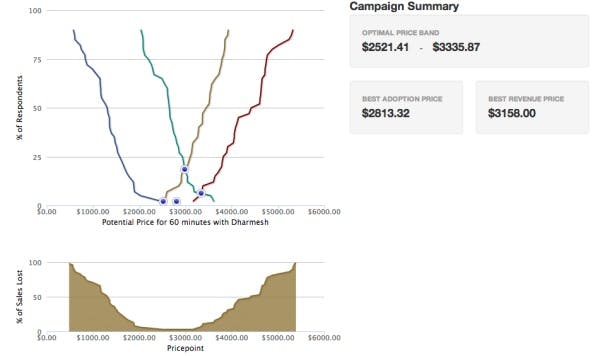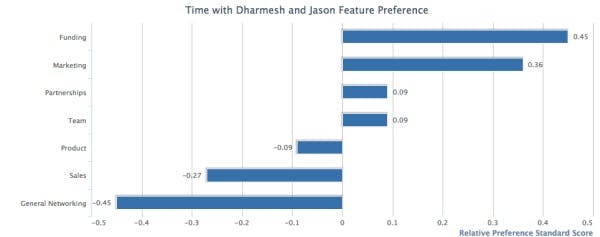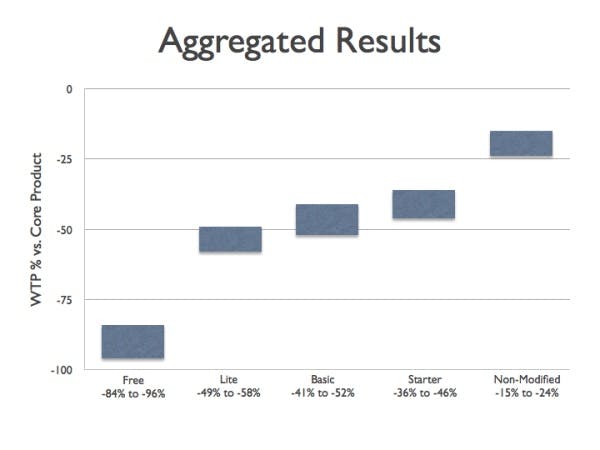Note: This post utilizes data from one of our customers, SmartBear Software. We'd like to thank Jeanne Hopkins, their CMO, for letting us release the gist of the findings, in order to let everyone learn from them.
Also to note: This post was written during a time in which we weren’t a fan of freemium. Our views have since changed and we now recognize freemium as an effective acquisition model. ProfitWell offers a free metrics tool, which you can check out here.
Freemium has gone from an intermittent growth tactic in the software disk days of the 1980s to a strategy that every SaaS company can’t live without. After all, how do you grow a business without giving away the farm for free?
Sarcasm aside, we’ve debated the merits of freemium before in a previous post. Our conclusion is better discovered on that post, but the gist is: freemium is an acquisition tool, not a revenue model. When used correctly, freemium can be wonderful for businesses and that’s why everyone is flocking to barren tiers. Yet, with 5 million downloads of their free tools for developers, one of our customers, SmartBear Software, was thinking about the naming convention of free or lite in labeling their software offerings, positing the question:
"Does calling the free plan “free” (or “lite”, “basic”, etc.) diminish the value of the product?"
The subtext here is that free plans have become such a novelty and so poorly set up that unless your first price point is close to free ($0), you’re essentially shooting yourself in the revenue draining foot, because the delta between the free plan and the first paid tier is too high (especially in enterprise companies). To answer their question, we did what we do best: gathered customer data and determined some willingness to pay magic. Let’s explore the study, the results, and top-level findings to help you boost your revenue right away.
The study: Comparing ordinal names to regular names
Without getting too deep into our software and process (you can hear the pitch on the phone or website if you want), we make value based pricing software that gets to the heart of willingness to pay by collecting data directly from the customer. Part of our software also determines relative preference between features, benefits, or value propositions by forcing the user to make choices between them. Here's some example output from a fun pricing study we did comparing the price of time with Dharmesh Shah or Jason Calcanis:


For this study, there were a few moving parts. We first took different target customers for each SmartBear product, had them price out a full featured product based on its features and value propositions, introduced a less featured free product with the free name, and then had them price out the free tier while knowing full well that the less featured tier was free. We then calculated the difference between those two numbers, and voila we had clear trends on the value of the names. (Side note: We also ran the feature preference studies against the different names.)
In terms of different names, we tested modified names where we appended “Free”, “Basic”, “Starter”, and “Lite” to an existing name. We also introduced a non-modified new name that was branded similarly, but didn’t have an ordinal prefix or suffix. For example, let’s say we’re pricing a product named PriceIntel. For the study, we would test pricing by determing the willingness to pay for "PriceIntel" (full featured product), then price “PriceIntel Free”, “PriceIntel Basic”, “PriceIntel Starter”, “PriceIntel Lite”, and then “PriceSmarts”, which is the non-modified name.
Hopefully, everyone is with me so far. If not, comment or give us a call and we’re more than happy to walk you through everything. :)
Results: Names have an impact on perceived value
The results were exceptionally telling. Essentially, “free” drove the price to pretty much free or $0. Basic, Starter, and Lite all hovered around 50% of the original value, and the non-modified name only drove the perceived value of the product down 15 - 24%. Keep in mind we tested this across some pretty nerdy segments (software engineers, software developers, network engineers, etc.), but every single segment we tested had pretty much the same results. Take a look at the aggregated results:

How can this help you? Non-Ordinal Names and Value Metrics
1. Skip ordinal names for your free tier
Instead of using cliche ordinal names like "free", "starter", "basic", or "lite", use a real name. Not creatively inclined? Just grab a thesaurus and get cracking. At the very least name the tier after the customer persona using the product. If the free plan is for a single person with the hope you’ll land and expand into the team, then name the tier “solo.” If it’s for small businesses, you’re also hoping to grow with, then name it the “small business plan.” I’m not a creative genius, so I’m sure there are better examples out there.
Just don’t kill your value, conversion rate, and revenue by pricing improperly.
2. Align your tiers along your value metric
A foundational principle of pricing and packaging is that you need to charge your customer for the value you’re providing them. As that value increases, you should charge more. Wistia is a phenomenal example. As you get more bandwidth and upload more videos (get more value from the product), you pay more.
If you don’t have a finely tuned throttle or proper feature differentiation between your free plan and that first tier, then you can’t move your customers up along your value. You’re just giving it away. This is especially scary in the enterprise space where the difference between a free plan and the first premium one can be from $500/month all the way to $1000s per month. As such, make sure that free plan, no matter the tier moves that customer “up the river” efficiently.
Freemium offers are only the silver bullet to a business when you’ve figured out a good portion of the big aspects of your business: customer, marketing flow, user metrics, etc. If you’re taking the free plunge or starting off with it from day one, make sure to start small. You can always add more features or increase the throttle, but it’s a heck of a lot harder to take things away. After all, if you’re not moving those customers up into greater profitability, then you’re just running a really expensive, developer ridden tech charity, rather than a growing business.
To learn more, check out our Pricing Strategy ebook, or learn more about our price optimization software and solutions. We're here to help!



